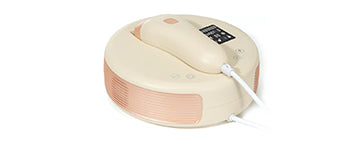In the ever-evolving realm of beauty and self-care, laser hair removal stands out as a transformative and promising solution. The quest for a smooth, hair-free complexion has driven countless individuals to explore this innovative technique, sparking curiosity about its efficacy across the diverse spectrum of skin types. As beams of concentrated light promise to banish unwanted hair at the root, a pertinent question emerges: does laser hair removal truly work on any skin type? The answer lies in the fascinating intersection of science, technology, and the rich tapestry of human skin diversity. Let’s seek to answer the burning question: Can lasers truly conquer the challenge of hair removal on any canvas of skin?
The Scientific Marvel of Laser Hair Removal
Delving into the intricacies of laser hair removal unveils a sophisticated dance between science and beauty. The precision of this cutting-edge technology lies in its ability to target hair follicles with meticulous accuracy. Whether contemplating the allure of permanent hair removal, the finesse required for bikini laser hair removal, or the delicate approach to facial hair removal, it's the science of selective photothermolysis that takes center stage. This method harnesses the power of light to selectively penetrate hair follicles, generating heat and disabling future growth. As we decode the scientific nuances, it becomes evident that the transformative promises of laser hair removal rest upon the harmonious blend of wavelengths, skin tones, and the artistry of technological precision.
Tailoring Laser Treatment to Your Unique Skin
In the realm of laser hair removal, achieving optimal results isn't a one-size-fits-all endeavor. Understanding the intricate nuances of skin types is crucial for tailoring laser treatments effectively. This customization ensures both safety and efficacy, providing individuals with a personalized and targeted approach to hair removal. Below, we explore key factors influencing the adaptation of laser treatments to different skin types.
The Fitzpatrick Scale: A Roadmap to Precision
Navigating the spectrum of skin tones requires a comprehensive understanding of the Fitzpatrick Scale, a widely acknowledged classification system. This scale not only identifies different skin types but also serves as a guide for calibrating laser settings. By aligning treatment parameters with individual skin characteristics, practitioners can optimize outcomes and mitigate potential risks.
Melanin Levels and Laser Wavelengths
The interplay between melanin, the pigment responsible for skin and hair color, and laser wavelengths is a critical consideration. Various skin types exhibit distinct melanin concentrations, influencing the choice of laser technology. A nuanced approach involves selecting wavelengths that effectively target hair follicles while minimizing adverse effects on surrounding skin pigmentation.
The Fitzpatrick Scale: Categorizing Skin Tones
At the heart of comprehending skin diversity lies the Fitzpatrick Scale, a six-point scale classifying skin types based on color, susceptibility to sun exposure, and tendency to burn or tan. Each type bears distinctive characteristics, influencing the approach to laser hair removal:
Type I - Very Fair
Pale, often with red or blonde hair, blue eyes, and a high tendency to sunburn.
Laser Hair Removal
Alexandrite or Diode lasers are often suitable, offering effective results.
Type II - Fair
Fair skin, blue or green eyes, and blonde or light brown hair.
Laser Hair Removal
Similar to Type I, Alexandrite and Diode lasers prove beneficial for optimal outcomes.
Type III - Medium
Light to medium-brown skin, hazel or brown eyes, and brown hair.
Laser Hair Removal
Nd:YAG lasers are commonly employed, balancing efficacy and safety.
Type IV - Olive
Moderate-brown skin, brown eyes, and dark brown hair.
Laser Hair Removal: Nd:YAG lasers continue to be effective, addressing the increased melanin levels.
Type V - Brown
Dark-brown skin, brown eyes, and dark hair.
Laser Hair Removal
Nd:YAG lasers remain a reliable choice, adapting to higher melanin concentrations.
Type VI - Very Dark
Deeply pigmented brown to black skin, dark eyes, and black hair.
Laser Hair Removal
Nd:YAG lasers stand out, offering a balance of precision and safety for darker skin tones.
Skin-Deep Challenges
Laser treatments have revolutionized the beauty landscape, offering the tantalizing promise of permanent hair removal and a reprieve from the relentless pursuit of smooth skin. However, as technology advances, the quest for inclusivity encounters its own set of challenges. Understanding the intricate relationship between laser treatments and diverse skin types is crucial for achieving optimal results. Let's explore the nuanced challenges that arise in the realm of permanent hair removal, particularly concerning facial hair, and the strategies employed to address them.
Melanin Disparities and Laser Absorption
Navigating the spectrum of melanin levels poses a significant challenge in achieving universal efficacy. Darker skin tones, rich in melanin, can absorb more laser energy, potentially leading to unwanted side effects, while lighter tones may require adjusted parameters to effectively target hair follicles.
Risk of Hyperpigmentation and Hypopigmentation
The delicate dance between laser energy and skin pigmentation brings forth the risk of post-treatment hyperpigmentation or hypopigmentation. Balancing the removal of hair with the preservation of even skin tone remains a meticulous task, particularly in facial hair removal where pigmentation variations are more pronounced.
Adapting Laser Parameters for Sensitive Areas
Facial hair removal introduces a unique challenge as the skin on the face is more sensitive than other body parts. Adjusting laser parameters to ensure optimal hair removal without compromising the delicacy of facial skin requires a nuanced understanding of both the technology and individual skin types.
Optimal Wavelengths for Different Skin Types
The selection of the right laser wavelength plays a pivotal role in achieving successful hair removal across diverse skin tones. Finding the balance that effectively targets hair follicles without causing damage to the surrounding skin demands a meticulous approach in treatment planning.
Individual Variations and Customization
The promise of laser hair removal on any skin type hinges on the ability to tailor treatments to individual variations. Professional assessments and customized approaches become essential to address unique challenges, ensuring both safety and efficacy in the pursuit of a hair-free future.
Revolutionizing Precision: Next-Gen Technologies in Laser Hair Removal
In the dynamic landscape of laser hair removal, recent technological advancements have taken the pursuit of smooth, hair-free skin to unprecedented heights. This evolution is not just about permanence but a tailored approach that addresses the unique needs of diverse skin types.
Dynamic Cooling Systems
Traditionally, laser hair removal treatments faced challenges when dealing with various skin tones, especially darker ones. The advent of Dynamic Cooling Systems (DCS) has transformed the landscape by introducing a pre-laser burst of cryogen spray milliseconds before the laser pulse. This innovative approach cools the skin's surface, ensuring a more comfortable experience while protecting it from the heat generated by the laser. DCS not only enhances the safety of the procedure but also makes laser hair removal a viable option for a broader range of skin types.
Nd:YAG Lasers
Nd:YAG lasers represent a significant leap forward in addressing the needs of individuals with darker skin tones. This technology operates at longer wavelengths, allowing the laser to penetrate deeper into the skin without adversely affecting the melanin-rich epidermis. By minimizing the risk of burns and hyperpigmentation, Nd:YAG lasers have become a go-to solution for permanent hair removal in patients with darker skin, ensuring that the benefits of laser treatments are accessible to all.
Diode Lasers
Diode lasers have become synonymous with precision across a spectrum of skin tones. Their versatility lies in the adjustable wavelengths that cater to the specific melanin levels in different skin types. This adaptability makes diode lasers effective for permanent hair removal in individuals with lighter to medium skin tones. The focus on precision minimizes the risk of side effects, providing a reliable solution for a diverse clientele seeking a long-term hair removal option.
Alexandrite Lasers
Designed for efficacy on lighter skin tones, Alexandrite lasers operate at shorter wavelengths, making them particularly effective in targeting melanin in fair skin. The emphasis on shorter wavelengths ensures that the energy is absorbed predominantly by the hair follicle, maximizing the treatment's efficiency while minimizing the risk of affecting the surrounding skin. Alexandrite lasers excel in delivering permanent hair removal for those with fair complexions, adding another layer of inclusivity to the world of laser technology.
Unlocking the Secrets: Expert Tips from Dermatologists
Dermatologists stress the importance of the Fitzpatrick Scale to categorize your skin tone accurately. This knowledge guides the customization of laser settings, optimizing the treatment's effectiveness while minimizing risks.
Precision is Paramount: Customize Laser Settings
To achieve permanent hair removal, precision matters. Dermatologists recommend fine-tuning laser parameters based on individual skin characteristics. Adjusting wavelength and energy levels ensures targeted hair follicle treatment, delivering optimal and enduring results.
Be Patient, Stay Consistent: Long-Term Success
Success in laser hair removal requires patience. Dermatologists emphasize the necessity of multiple sessions to address hair growth cycles effectively. Adhering to the recommended treatment schedule and being consistent contribute to achieving lasting results.
Post-Treatment TLC: Nurturing Your Skin
After laser sessions, post-treatment care is crucial. Dermatologists advise protecting treated areas from sun exposure, avoiding harsh skincare products, and monitoring for any unusual reactions. Nurturing your skin post-treatment promotes a smooth recovery and enhances overall success.
In the kaleidoscope of skin diversity, laser hair removal emerges as a beacon of transformative possibility. As we peel back the layers of science, technology, and expert insights, it becomes evident that this innovative solution is not bound by the constraints of skin types; instead, it thrives on the celebration of individual uniqueness. From fair to deep tones, the precision of lasers, coupled with personalized approaches championed by dermatologists, paints a canvas where the quest for permanent hair removal knows no bounds. As we bid farewell to razors and waxing woes, the promise of enduring smoothness beckons to all, echoing the inclusivity of a beauty revolution that spans the entire spectrum of skin types. The verdict is clear: the laser's brilliance shines brightest when illuminating the path to confidence, irrespective of the diverse tapestry it graces.






